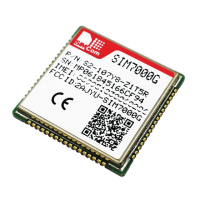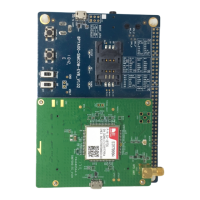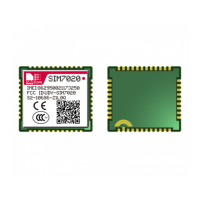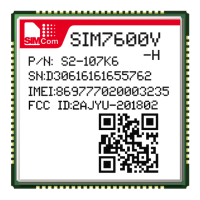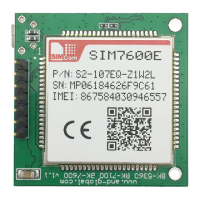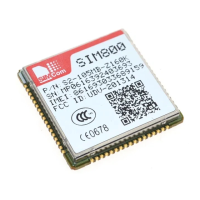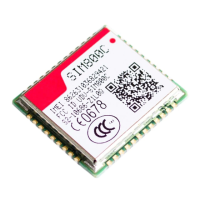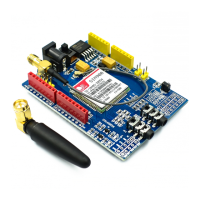Smart Machine Smart Decision
SIM7000 Series_AT Command Manual_V1.03 14 2018-05-08
Code "RDY" is received from serial port. If auto-bauding is enabled, the Unsolicited Result Codes "RDY"
and so on are not indicated when you start up the ME, and the "AT" prefix, or "at" prefix must be set at the
beginning of each command line.
All these AT commands can be split into three categories syntactically: "basic", "S parameter",
and "extended". These are as follows:
1.4.1 Basic syntax
These AT commands have the format of "AT<x><n>", or "AT&<x><n>", where "<x>"is the
Command, and "<n>"is/are the argument(s) for that Command. An example of this is "ATE<n>",
which tells the DCE whether received characters should be echoed back to the DTE according to
the value of "<n>". "<n>" is optional and a default will be used if missing.
1.4.2 S Parameter syntax
These AT commands have the format of "ATS<n>=<m>", where "<n>" is the index of the S
register to set, and "<m>"is the value to assign to it. "<m>" is optional; if it is missing, then a
default value is assigned.
1.4.3 Extended Syntax
These commands can operate in several modes, as in the following table:
Table 1: Types of AT commands and responses
Test Command AT+<x>=?
The mobile equipment returns the list of parameters
and value ranges set with the corresponding Write
Command or by internal processes.
Read Command AT+<x>? This command
returns the currently set value of the
parameter or parameters.
Write Command AT+<x>=<…> This command sets the user-
values.
Execution Command AT+<x> The execution command reads non-variable
parameters affected by internal processes in the GSM
engine.
1.4.4 Combining AT commands on the same Command line
You can enter several AT commands on the same line. In this case, you do not need to type the
"AT" or "at" prefix before every command. Instead, you only need type "AT" or "at" the
beginning of the command line. Please note to use a semicolon as the command delimiter after
an extended command; in basic syntax or S parameter syntax, the semicolon need not enter, for
example: ATE1Q0S0=1S3=13V1X4;+IFC=0,0;+IPR=115200.
The Command line buffer can accept a maximum of 559 characters (counted from the first
command without "AT" or "at" prefix) or 39 AT commands. If the characters entered exceeded

